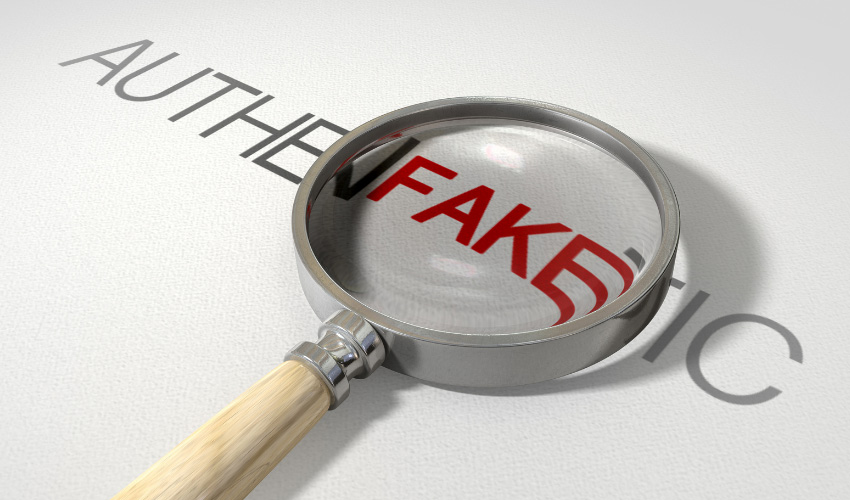
U.S. companies lose $200-250 billion in revenue each year because of counterfeit parts. Beyond that, counterfeit parts can cause irreparable harm including reputational damage, compromised national security, and even have life or death consequences.
Counterfeit components are hard to detect, and come in many different forms—remarked, overproduced, defective, cloned, tampered, and/or forged documentation. Regardless of the type of counterfeit electronic component, the bottom line is this: the counterfeit component has not been subjected to the rigorous quality control testing needed to ensure it can be properly rated for high-demand or extreme operating environments.
To help you better detect if your electronic components are counterfeit or not, we’ve prepared a list of five ways to determine if an electronic component is counterfeit.
1. External Visual Inspection (EVI)
One of the easiest ways to find out if your parts are counterfeit is by taking a look at the part visually. It is recommended to compare the part you received with a part that you know is an authentic component. Common mistakes with counterfeit parts are inconsistencies within the same date and/or lot code with the following:
2. Scanning Acoustic Microscope
Scanning Acoustic Microscope (SAM) is used to locate etching underneath blacktopping. If this exists, this is a sign that resurfacing was used to cover up the original markings. Luckily, this is a non-destructive test, so the component can be used if it is determined to be authentic.
3. X-Ray Inspection
X-Ray inspection can show missing or inconsistent die sizes, delamination, and broken or missing wire bonds. This type of test allows for you to look at more of the internal structure of the component and find things that are not visible to the naked eye. This is also a non-destructive test as long as the cumulative radiation exposure to the component does not exceed the manufacturer’s specification.
4. Decapsulation
Decapsulation is a destructive test that places abrasive acids on the surface of a component until the internal dye reveals itself. This allows for internal analysis of the electronic component.
The internal parts are tested against the parts of the original design of the component. This test helps test the die markings, layout, and bond integrity of the component.
5. Scrape or Acetone Test
The Acetone Test is also a destructive test used to discover if the component has been blacktopped and resurfaced. Acetone is applied to the component and if the swab turns black or another color, the part may have been coated. If the part fails the acetone test, it may not be an original part. However, it’s important to note that the acetone test may not always be the best fit because manufacturers have been known to resurface parts for legitimate reasons.
A scrape test is another destructive test that can be performed to see if the component was blacktopped and resurfaced for illegitimate reasons. Instead of using acetone, use a sharp blade to scrape the surface of the device. If a blacktopping has occurred, a coating will flake or peel off during the scrape test revealing visible sanding marks or prior part markings.
Protecting your business and customers from counterfeit electronic components is essential for remaining profitable, keeping your customers safe, and staying in good standing within the community. But, you don’t have to determine if an electronic component is counterfeit all on your own. There are trusted companies who specialize in counterfeit detection, and want to help you.
Need help? Area51 Electronics is a global distributor of electronic, electrical and electromechanical components, hardware and assemblies. The company adheres to the strictest protocols for achieving authentic, verified electronic parts. It carries the highest level of care, quality assurance and counterfeit mitigation possible. Contact Area51 Electronics today.